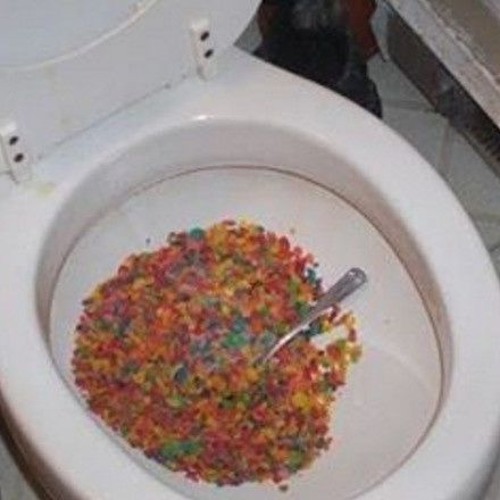This great article below about What Can Happen If You Flush Food Down the Toilet? is particularly attention-grabbing. You should investigate for yourself.

Introduction
Many individuals are usually confronted with the issue of what to do with food waste, particularly when it pertains to leftovers or scraps. One common inquiry that develops is whether it's alright to flush food down the toilet. In this short article, we'll delve into the reasons people could think about purging food, the repercussions of doing so, and alternative approaches for proper disposal.
Reasons individuals may consider purging food
Lack of understanding
Some individuals may not be aware of the prospective harm brought on by flushing food down the bathroom. They may erroneously believe that it's a harmless method.
Comfort
Purging food down the commode might seem like a fast and easy service to disposing of unwanted scraps, especially when there's no nearby trash bin available.
Laziness
In many cases, individuals may merely pick to flush food out of large negligence, without considering the consequences of their activities.
Repercussions of flushing food down the toilet
Ecological effect
Food waste that ends up in rivers can contribute to pollution and harm marine environments. Additionally, the water made use of to flush food can stress water resources.
Plumbing concerns
Flushing food can bring about blocked pipelines and drains, causing expensive pipes repairs and troubles.
Sorts of food that ought to not be purged
Coarse foods
Foods with coarse textures such as celery or corn husks can get entangled in pipes and cause blockages.
Starchy foods
Starchy foods like pasta and rice can take in water and swell, bring about clogs in pipelines.
Oils and fats
Greasy foods like bacon or cooking oils should never be flushed down the toilet as they can strengthen and trigger obstructions.
Correct disposal methods for food waste
Using a waste disposal unit
For homes outfitted with garbage disposals, food scraps can be ground up and flushed with the plumbing system. Nonetheless, not all foods appropriate for disposal in this manner.
Recycling
Certain food product packaging products can be reused, reducing waste and reducing ecological influence.
Composting
Composting is an environmentally friendly means to deal with food waste. Organic products can be composted and made use of to improve soil for horticulture.
The relevance of correct waste administration
Lowering ecological harm
Proper waste monitoring methods, such as composting and recycling, assistance lessen air pollution and protect natural deposits for future generations.
Securing pipes systems
By avoiding the method of flushing food down the bathroom, home owners can prevent costly plumbing repair work and preserve the stability of their plumbing systems.
Final thought
To conclude, while it may be alluring to purge food down the commode for comfort, it is necessary to recognize the possible repercussions of this action. By adopting correct waste monitoring methods and throwing away food waste properly, people can contribute to much healthier pipes systems and a cleaner setting for all.
FLUSH FOOD DOWN THE TOILET?
FLUSHING FOOD CAN CAUSE BLOCKED DRAINS IN YOUR HOME
All of the plumbing fixtures in your home are connected to the same sewer pipe outside of your home. This outdoor sewer pipe is responsible for transporting all the wastewater from your home to the Council sewer mains. Even small pieces of food that go down the kitchen sink can cause problems for your sewer. It should therefore be obvious that flushing larger bits of food, such as meat, risks a clog in either the toilet itself or the sewer pipes. Flushing greasy food is even more problematic because oil coagulates when it cools, coating the interior lining of your pipes.
THE TOILET IS NOT A BIN
Food isn’t the only thing that people shouldn’t be flushing down the toilet. People use the toilet to dispose of all kinds of things such as tampons, makeup wipes, dental floss, kitty litter and even underwear. Water goes to great lengths to educate residents about the high costs and stress placed on wastewater treatment systems simply from people flushing the wrong stuff down the toilet. It costs taxpayers millions of dollars each year, and homeowners thousands in blocked drain repairs.
FLUSHING FOOD IS A WASTE OF WATER
Flushing food is a waste of our most precious resource - water. In June this year Level 1 water restrictions were introduced to protect water supply from drought conditions. Much of New South Wales continues to be affected by prolonged drought with recent figures revealing up to 97 per cent of the state remains in drought. Depending on whether you have a single or dual flush toilet, every single flush uses between five and 11 litres of water. In the current climate this is a huge amount of water to be wasting on flushing food that should be placed in the bin (or better yet, the compost).
https://www.jabplumbingsolutions.com.au/blog/can-you-flush-food-down-the-toilet

Do you really like more info about Flushing Food Down the Toilet?? Make a remark directly below. We will be pleased to hear your responses about this blog post. Hoping that you visit us again later on. Sharing is good. Helping people is fun. Thanks a bunch for being here. Come back soon.
Call Today